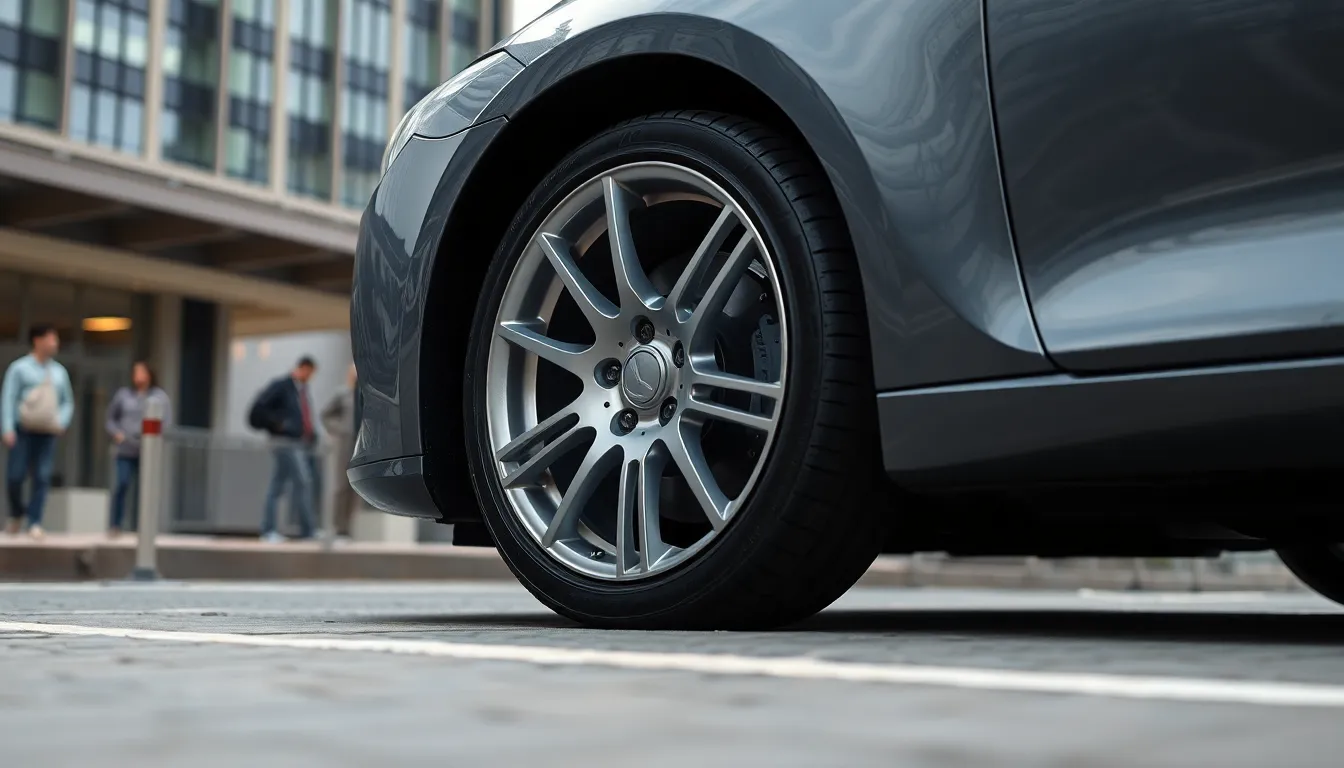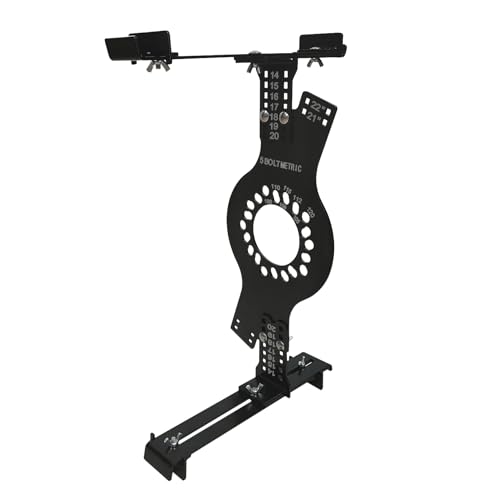When we’re shopping for new wheels or upgrading our ride, we often hear the term “offset” thrown around by mechanics and enthusiasts. But what exactly does wheel offset mean, and why should we care about this seemingly technical specification?
Wheel offset directly impacts how our vehicle looks, handles, and performs on the road. It’s the measurement that determines where our wheel sits in relation to the wheel well – affecting everything from our car’s stance to its suspension geometry. Getting the offset wrong can lead to rubbing issues, poor handling, and even premature wear on critical components.
Whether we’re looking to achieve that perfect flush fitment or simply want to ensure our new wheels won’t cause problems, understanding offset is crucial. We’ll break down this essential concept in simple terms, helping you make informed decisions for your next wheel purchase and avoid costly mistakes that could impact your vehicle’s performance and safety.
What Is Wheel Offset and Why Does It Matter?
Wheel offset measures the distance between the wheel’s mounting surface and its centerline. This measurement determines how far inward or outward your wheels sit relative to the wheel well. We express offset in millimeters with three distinct categories: positive offset pushes wheels inward toward the vehicle, negative offset moves wheels outward away from the vehicle, and zero offset places the mounting surface exactly at the wheel’s centerline.
Understanding offset becomes critical because it directly affects your vehicle’s performance characteristics. Changing offset alters the scrub radius, which influences steering feel and handling precision. Vehicles with incorrect offset experience increased stress on suspension components including wheel bearings, ball joints, and control arms.
Safety concerns arise when offset specifications deviate significantly from manufacturer recommendations. Wheels with excessive positive offset can cause interference with brake calipers, suspension components, or inner fender wells. Conversely, wheels with too much negative offset may protrude beyond fender lines, creating legal issues and increasing the risk of road debris damage.
Performance impacts extend beyond basic safety considerations. Altered offset changes the vehicle’s track width, affecting weight distribution and cornering stability. Cars with wider track widths typically exhibit improved lateral grip but may experience increased tire wear on the outer edges if the offset change is extreme.
Aesthetic considerations also play a important role in offset selection. Positive offset creates a more tucked appearance with wheels sitting deeper in the wheel wells. Negative offset produces an aggressive stance with wheels extending outward, creating a wider visual footprint that many enthusiasts prefer for show vehicles.
Types of Wheel Offset

Manufacturers design wheels with three distinct offset types that determine where the mounting surface sits relative to the wheel’s centerline. Each type creates different positioning effects that impact both vehicle performance and appearance.
Positive Offset
Positive offset positions the hub mounting surface toward the outside or street side of the wheel’s centerline. Modern front-wheel-drive vehicles commonly feature this configuration along with many contemporary rear-wheel-drive cars. This design tucks wheels further under the wheel well, creating a more conservative appearance while optimizing suspension geometry for improved handling characteristics. Positive offset reduces the scrub radius, which enhances steering precision and reduces stress on wheel bearings during cornering maneuvers.
Negative Offset
Negative offset places the hub mounting surface behind the wheel’s centerline, pushing the wheel outward from the vehicle’s body. Lifted trucks and off-road vehicles typically use this configuration to achieve wider track widths and accommodate larger tire clearances. Deep dish wheels also feature negative offset to create their distinctive concave appearance. This setup increases the scrub radius, which can make steering feel heavier but provides better straight-line stability on uneven terrain. Negative offset wheels extend beyond the original wheel well position, creating a more aggressive stance.
Zero Offset
Zero offset positions the hub mounting surface exactly at the wheel’s centerline, creating a neutral mounting position. Custom applications and specialized off-road builds primarily use this configuration rather than mainstream vehicle applications. Zero offset provides a balanced approach between positive and negative characteristics, offering moderate outward wheel positioning without extreme handling changes. This type appears less frequently in production vehicles since manufacturers typically optimize offset for exact suspension designs and aesthetic preferences.
How to Measure Wheel Offset

Measuring wheel offset requires calculating the distance from the hub mounting surface to the wheel’s centerline. We typically express this measurement in millimeters and determine it using exact tools and techniques.
Removing the tire from the wheel becomes essential before taking accurate measurements. We cannot obtain precise offset readings with the tire mounted since the rubber obscures the wheel’s true dimensions and mounting points.
Measurement Methods:
| Method | Tool Required | Accuracy Level |
|---|---|---|
| Caliper measurement | Digital or dial calipers | High precision |
| Specification check | Wheel markings | Manufacturer verified |
| Professional measurement | Shop equipment | Highest accuracy |
Checking the wheel specifications provides the most reliable offset information. We find these specifications stamped or etched directly onto the wheel itself, usually on the back side or inner barrel area.
Using calipers offers an alternative measurement approach when specifications aren’t visible. We measure from the hub mounting surface to the wheel’s centerline by first determining the total wheel width and then calculating the distance to the mounting surface.
Professional wheel shops use specialized equipment that guarantees precise measurements. We recommend this method when purchasing aftermarket wheels or when offset specifications aren’t clearly marked on existing wheels.
Step-by-Step Measurement Process:
- Position the wheel face down on a flat surface
- Measure the total wheel width using calipers
- Calculate the centerline by dividing the width by two
- Measure the distance from the mounting surface to the back edge
- Subtract this distance from the centerline measurement
Proper clearance verification ensures the measured offset works with your vehicle’s suspension geometry. We check for adequate space between the wheel and brake calipers, suspension components, and fender wells before finalizing wheel selection.
Digital tools and smartphone apps now assist with offset calculations, though physical measurement remains the most accurate approach. We always verify digital calculations against manual measurements to ensure precision in critical automotive applications.
Effects of Wheel Offset on Vehicle Performance
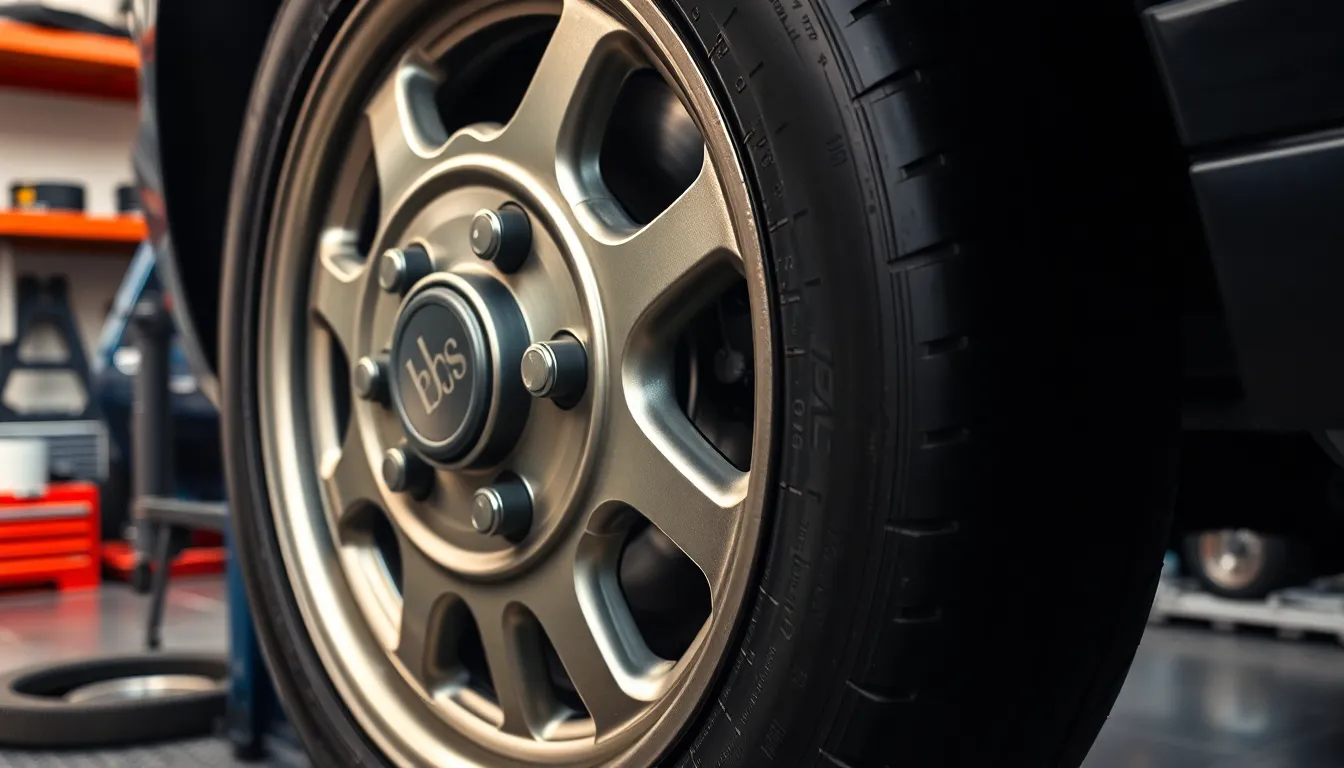
Wheel offset directly influences multiple aspects of vehicle dynamics and component longevity. Understanding these effects helps us make informed decisions when selecting aftermarket wheels.
Impact on Handling and Steering
Incorrect wheel offset fundamentally alters our vehicle’s ever-changing balance and steering characteristics. Positive offset maintains factory-designed scrub radius, ensuring predictable steering response and optimal feedback through the steering wheel. Negative offset increases scrub radius, creating heavier steering feel and potential instability during braking or acceleration.
Changes to offset modify the distance between the tire contact patch and the steering axis, affecting how forces transfer through the suspension system. Excessive positive offset can reduce cornering stability by narrowing the effective track width, while excessive negative offset may cause wandering or darting during straight-line driving. Proper offset maintains the manufacturer’s intended steering geometry, preserving smooth cornering performance and straight-line stability.
Effects on Suspension Components
Suspension components experience increased stress when offset deviates significantly from factory specifications. Altered offset changes the moment arm around suspension pivot points, creating additional forces that bearings, bushings, and joints weren’t designed to handle. Wheel bearings face the greatest impact, as incorrect offset increases lateral loads and accelerates wear patterns.
Ball joints and tie rod ends also suffer from improper offset, particularly when negative offset pushes wheels outward beyond design parameters. Control arm bushings experience premature degradation due to altered suspension geometry and increased leverage forces. These components may require earlier replacement intervals when running non-factory offset specifications, increasing maintenance costs and potential safety concerns.
Tire Wear Patterns
Wheel offset significantly influences tire wear characteristics by altering the tire’s position within the wheel well and contact patch geometry. Incorrect offset creates uneven loading across the tire’s surface, leading to premature wear on inside or outside edges. Positive offset typically causes inner edge wear, while negative offset promotes outer edge wear patterns.
Scrub radius changes from altered offset affect how tires interact with road surfaces during steering inputs and suspension movement. Increased scrub radius from negative offset creates additional tire scrubbing during turns, reducing tread life and potentially causing irregular wear patterns. Proper offset maintains even tire contact with the road surface, maximizing tread life and ensuring consistent performance throughout the tire’s service interval.
Choosing the Right Offset for Your Vehicle
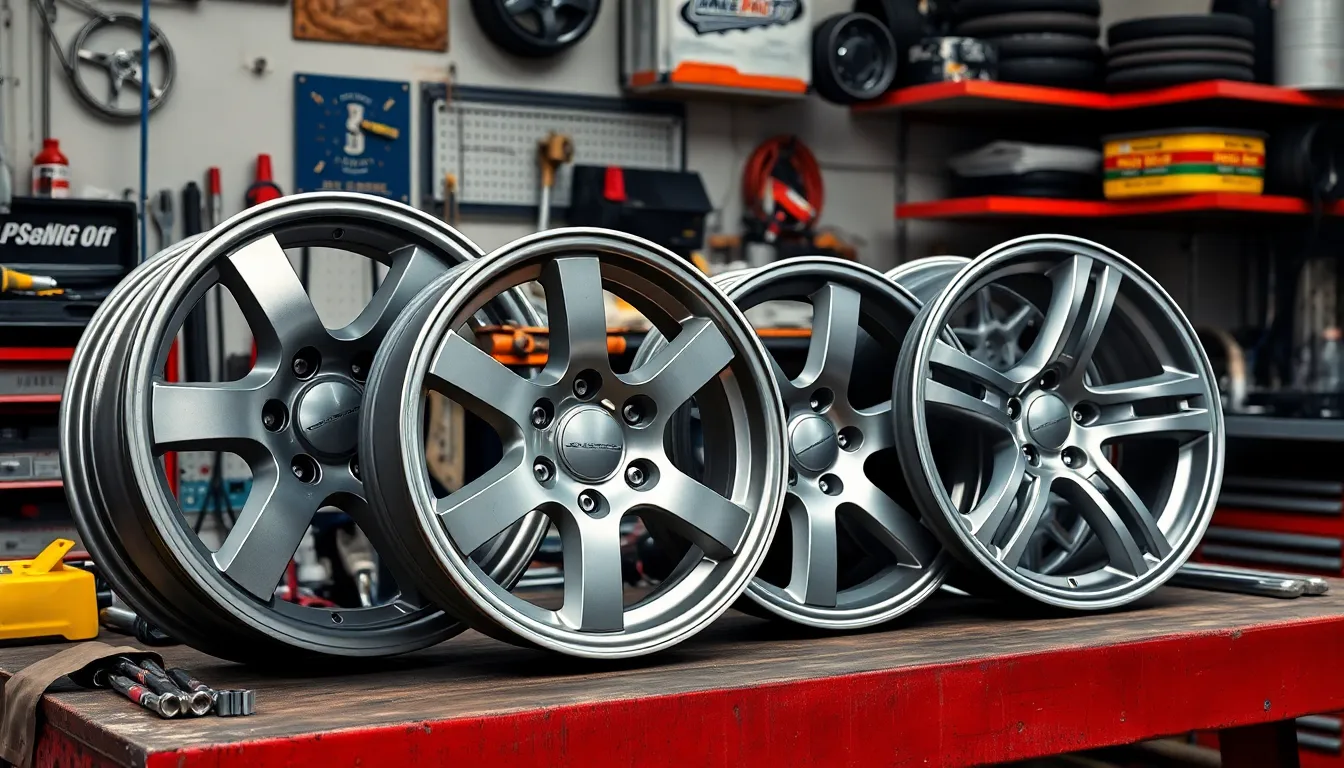
Selecting the appropriate wheel offset ensures optimal vehicle performance while maintaining safety and functionality. We must consider both manufacturer specifications and aftermarket alternatives when making this critical decision.
OEM Specifications vs. Aftermarket Options
OEM wheels feature offset measurements specifically engineered to optimize performance and safety for each vehicle model. Manufacturers design these specifications to ensure proper clearance within wheel wells while maintaining ideal suspension geometry and steering characteristics. Original equipment wheels typically provide the most reliable fitment with guaranteed compatibility across all vehicle systems.
Aftermarket wheels offer extensive customization opportunities but require careful offset consideration to avoid component interference. These wheels provide options for enhanced aesthetics and performance modifications that deviate from factory specifications. Custom offset selections can improve vehicle stance and handling characteristics when properly matched to suspension modifications and driving requirements.
Aftermarket manufacturers produce wheels with varying offset ranges to accommodate different vehicle applications and performance goals. Professional fitment verification becomes essential when selecting non-OEM wheels to prevent rubbing against brake calipers, suspension components, or fender liners. Installation of aftermarket wheels with incorrect offset can void vehicle warranties and create safety hazards during operation.
Considerations for Different Driving Styles
Daily commuting requires wheel offset specifications that prioritize comfort, fuel efficiency, and component longevity over aggressive performance characteristics. Conservative offset choices maintain factory suspension geometry and reduce stress on wheel bearings and steering components. Standard offset selections provide predictable handling characteristics suitable for typical driving conditions and varying road surfaces.
Performance driving benefits from wheel configurations that enhance stability and cornering precision through optimized offset measurements. Track-focused applications often use wider wheels with adjusted offset to accommodate larger brake systems and improved tire contact patches. Racing applications may require negative offset wheels to achieve wider track widths and enhanced lateral grip during high-speed cornering maneuvers.
Off-road driving styles necessitate offset considerations that provide adequate tire clearance and suspension travel without compromising ground clearance. Lifted vehicles frequently employ negative offset wheels to position tires outside fender lines and accommodate larger tire sizes. Rock crawling and trail driving applications benefit from offset selections that improve approach angles while maintaining structural integrity under extreme conditions.
Common Mistakes When Changing Wheel Offset
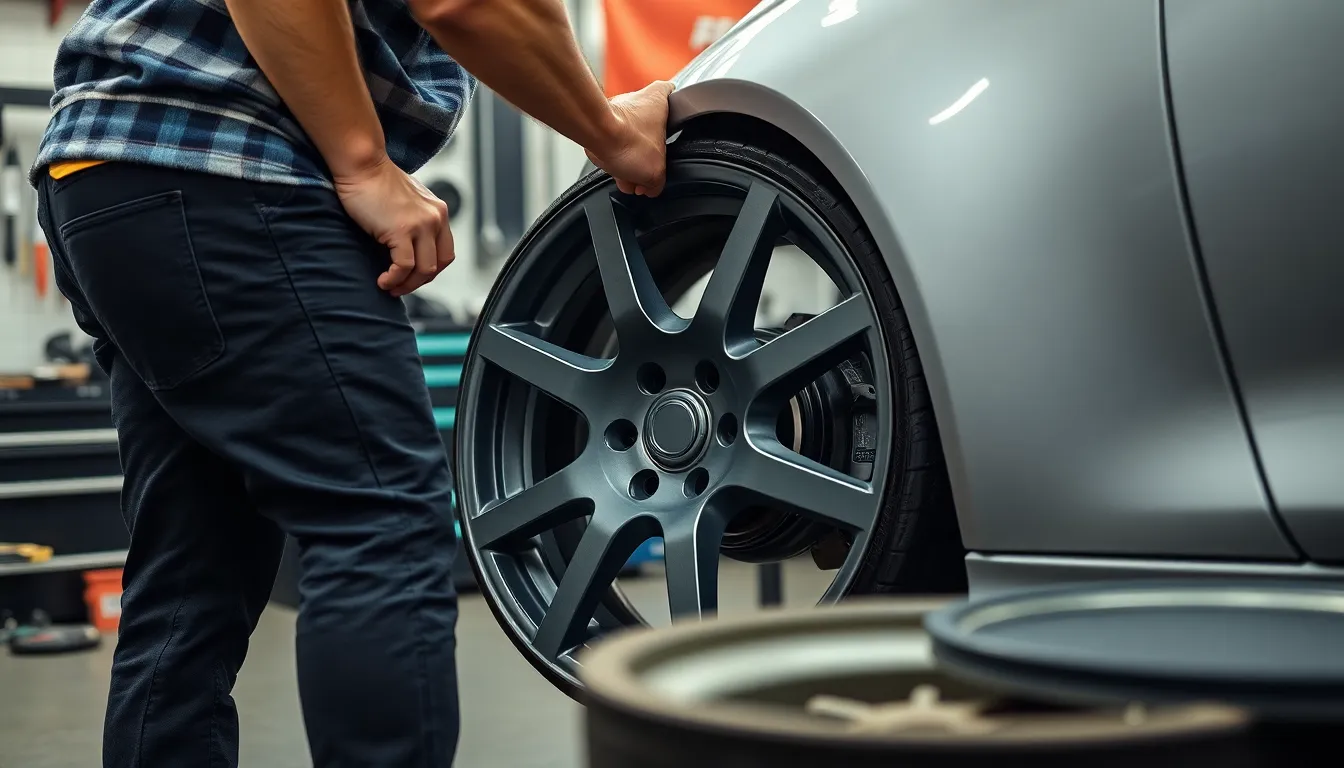
Not matching factory specifications represents the most frequent error we observe when enthusiasts upgrade their wheels. Installing wheels with incorrect offset creates immediate problems including rubbing against fenders, interference with suspension components, and potential damage to vehicle systems. Many drivers assume aftermarket wheels automatically fit their vehicle without verifying offset compatibility.
Ignoring wheel width impact compounds offset problems significantly. Changing wheel width without adjusting offset pushes the fitment outside acceptable tolerances, leading to clearance issues that weren’t present before. We see this mistake particularly with enthusiasts who select wider wheels without considering how the increased width affects the overall wheel position.
Neglecting backspacing calculations creates interference problems with brake calipers and suspension parts. Backspacing measures the distance from the mounting surface to the inner edge of the wheel, and offset changes directly affect this critical dimension. Proper backspacing ensures adequate clearance for all moving components within the wheel well.
Assuming all offsets fit represents a dangerous misconception we encounter regularly. Even visually similar wheels may have subtly different offsets that create important problems during installation. Each vehicle model requires verification of fit before installation, regardless of how similar the new wheels appear to existing ones.
Overlooking legal and safety concerns affects both handling characteristics and regulatory compliance. Improper offset alters vehicle handling dynamics and braking performance while potentially violating local vehicle regulations. We recommend consulting local laws about wheel protrusion limits before making offset changes.
| Common Offset Mistakes | Potential Consequences | Prevention Method |
|---|---|---|
| Not matching factory specs | Rubbing, steering interference, component damage | Verify manufacturer specifications |
| Ignoring wheel width changes | Clearance issues, improper fitment | Calculate offset adjustments for width changes |
| Neglecting backspacing | Brake caliper interference, suspension contact | Measure backspacing requirements |
| Assuming universal fit | Installation problems, safety issues | Test fit each vehicle individually |
| Overlooking regulations | Legal violations, handling problems | Check local vehicle modification laws |
Proper fitment requires matching offset, width, and backspacing to vehicle specifications simultaneously. We recommend professional consultation when changing multiple wheel dimensions to avoid performance and safety complications.
Conclusion
Understanding wheel offset empowers us to make informed decisions that enhance both our vehicle’s performance and appearance. We’ve explored how this critical measurement affects everything from handling precision to tire wear patterns.
Whether we’re seeking improved aesthetics or better performance we now know that proper offset selection requires careful consideration of our driving needs and vehicle specifications. The key lies in balancing our desired look with functional requirements.
We encourage taking accurate measurements and consulting professionals when uncertainty arises. Remember that even small offset changes can significantly impact our vehicle’s behavior and safety. With this knowledge we’re equipped to choose wheels that deliver the perfect combination of style performance and reliability for our exact driving requirements.
Frequently Asked Questions
What is wheel offset and why is it important?
Wheel offset is the distance between the wheel’s mounting surface and its centerline, measured in millimeters. It’s crucial because it affects your vehicle’s handling, performance, and appearance. Proper offset ensures optimal suspension geometry, prevents rubbing, and maintains safe steering characteristics while avoiding premature wear on vehicle components.
What are the three types of wheel offset?
The three types are positive, negative, and zero offset. Positive offset pushes wheels inward toward the vehicle (most common in modern cars), negative offset moves wheels outward for a wider stance (popular on trucks), and zero offset places the mounting surface at the centerline for balanced positioning.
How does wheel offset affect vehicle performance?
Wheel offset directly impacts handling, steering feel, and stability. Incorrect offset alters the vehicle’s track width and weight distribution, affecting cornering ability and tire wear patterns. It can also increase stress on suspension components, leading to accelerated wear on bearings, bushings, and joints if not properly matched.
Can I change my wheel offset without consequences?
Changing wheel offset from factory specifications can lead to serious consequences including tire rubbing, steering interference, poor handling, and increased component wear. It may also cause legal issues if wheels protrude beyond fender lines. Always consult professionals and verify fitment before making changes to ensure safety and performance.
How do I measure wheel offset accurately?
Remove the tire and measure the distance from the wheel’s mounting surface to its centerline using calipers or measuring tools. You can also check wheel specifications or use professional measurement equipment. Digital tools and smartphone apps are available, but manual measurements provide the most precision for automotive applications.
What’s the difference between offset and backspacing?
While both measurements relate to wheel positioning, offset measures from the centerline to the mounting surface, while backspacing measures from the wheel’s back edge to the mounting surface. Understanding both is important for proper wheel fitment, as they work together to determine how the wheel sits in the wheel well.
Should I match factory offset when buying aftermarket wheels?
Generally, yes. Factory offset is engineered for optimal performance, safety, and component longevity. While aftermarket wheels offer customization options, deviating significantly from OEM specifications without proper consideration can lead to handling issues, component stress, and safety concerns. Professional consultation is recommended for significant changes.

